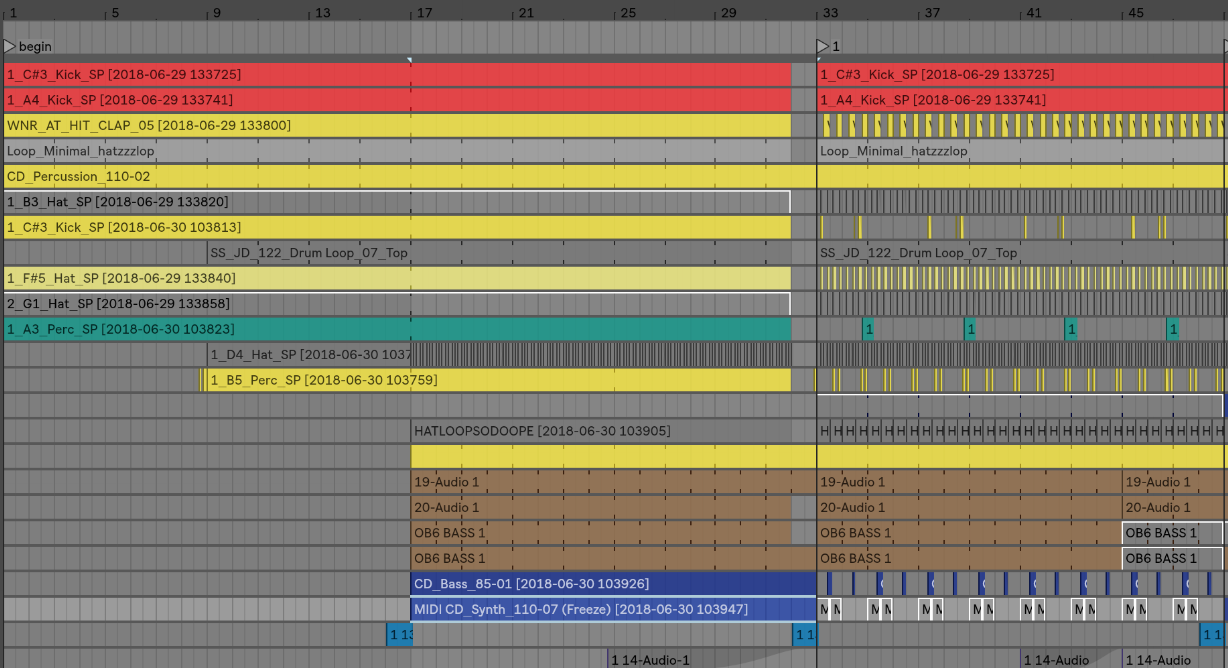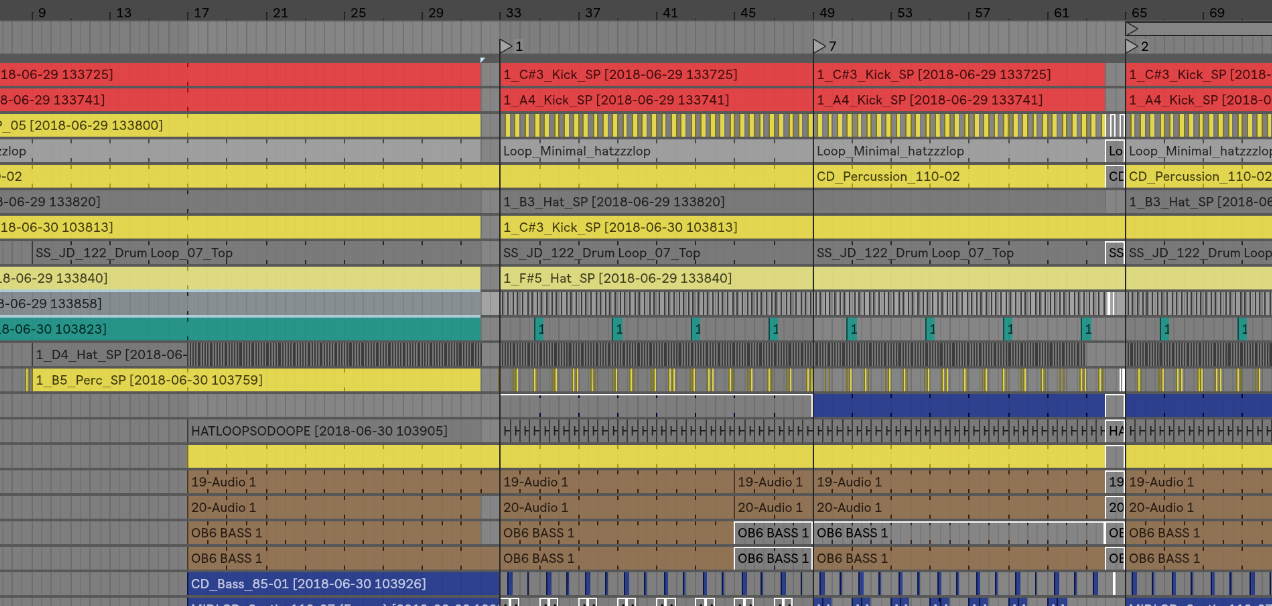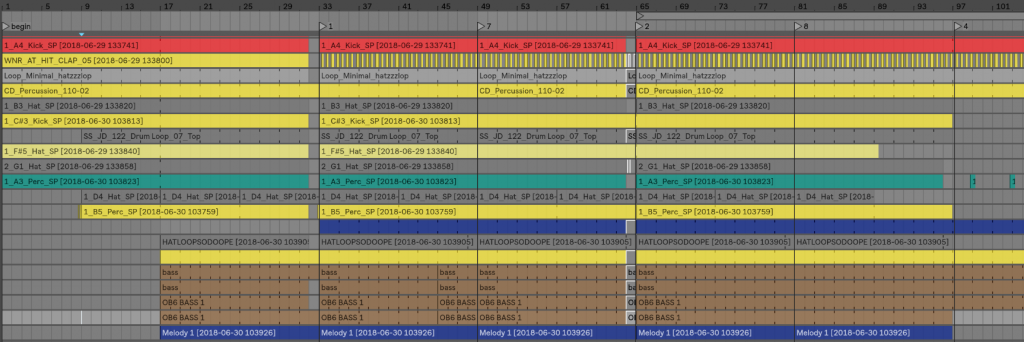Basic Song Arrangements Tips
Given the quantity of hours of mixing I do regularly, I work on lot of projects from a wide variety of clients. I also have to do a lot of “cleaning up” before I get to work on the actual mixing of a song. I wanted to share with you basic song arrangement tips that you can do which will speed up song construction and help make it sound better in the end.
Cleaning a project for clarity
“Cleaning” is something many people overlook, but it will help you better understand what’s happening in a song. I strongly encourage people to work on multiple projects at once with my non-linear production technique; a clean project will help you understand where you left off on your last session.
Here are some tips for a cleaner, clearer project:
- Name your channels/samples something simple. For example, rename that loop “rolling_AD252” to “percussion”. Keep things simple and clear as well as have your own vocabulary.
- Color each channel based on content. For instance, red for kick, brown for bass, blue for melody, etc. On Live v10, you can then apply that color to the clips.
- Create a comprehensive timeline in your arrangement. This is where 90% fail! The first sounds in your song should be moved way up to the front and top, and as sounds come in, they should be dropped in below. Since the arranger moves from left to right, you will sounds appear in order of appearance, just like how they make it for movies.
- Drop markers to see the key points. Markers on the timeline help you see how things are repeating in a logical matter as well as for you to see where to drop in your transitions.
- Consolidate blocks of sounds, change color if there are changes. Consolidate all the little blocks so you can duplicate them easily and see your arrangements more clearly.
- Arrangements aren’t mixing. Don’t add all your effects and compression yet, focus on the timeline of things, then you can easily group and do your mixing if everything has been labeled and colored properly.
 Before consolidation
Before consolidation
 Clips consolidated
Clips consolidated
 And duplicated
And duplicated
Think Balance
When you make a song, you have to think of a few key points to keep people interested:
- Keep things moving to avoid redundancy.
- Have logical development.
- Bring in some surprises.
- Have solid transitions.
All this can be seen visually if your project is clean and clear. Here’s how:

The image above is a good clean start. You can see these blocks are pretty straight-forward and repetitive. Usually when I hear a song like that, I will automatically visualize the blocks coming in and out; I call that type of arrangement “blocky.” There’s not much happening, nothing is too exciting, and the balancing of “blocky” songs is extremely rigid, dull.
However, having a “blocky” song can easily be fixed.
- A sound can be appreciated agan if you “reset” it. You can “reset” a sound by turning it off, removing it, then bringing it back at a key point. This is a good way for the listener to appreciate different combinations of sounds all together. If you leave all your clips playing all the time, you can’t appreciate if X plays with Y alone. This is why I find that a song with 3 hats and or 3 percussion tracks gives you a really broad range of combinations, but you’ll need to be creative to have them all explored in a song. That can be done by occasionally muting certain sounds.
- Transitions, transitions, transitions. Did I say this enough? You can make nice transitions with en effect, a silence, a flam (rolling, repeating sounds), a swap of sound(s), a volume automation, etc. Explore!
- Automation, fade-ins. If your sounds all come in at once, try having some fade-ins from time to time.
- Create variations. If the sounds were programmed in a specific way in a section, have them varied in the following section.
- Varied patterns length. If you have multiple patterns that are one bar long, try having some that are 2 bars long, others 4, some half a bar. The richness of the combinations where sounds shuffle over time will be exciting to listen to.
- Don’t drop all of your musical assets right at the start. Try to keep new sounds appearing per sections.

This last image shows what a project like with some holes added, which will add a lot more dynamism and surprise to your song. Take your time! You can trust the listener by letting things go and let things evolve. If you’re not into ever-evolving songs and more into stripped-down, tracky arrangements, its pretty much the same thing: take your time to get things come in and use automation.
I hope this helps!

 the organization.
the organization.